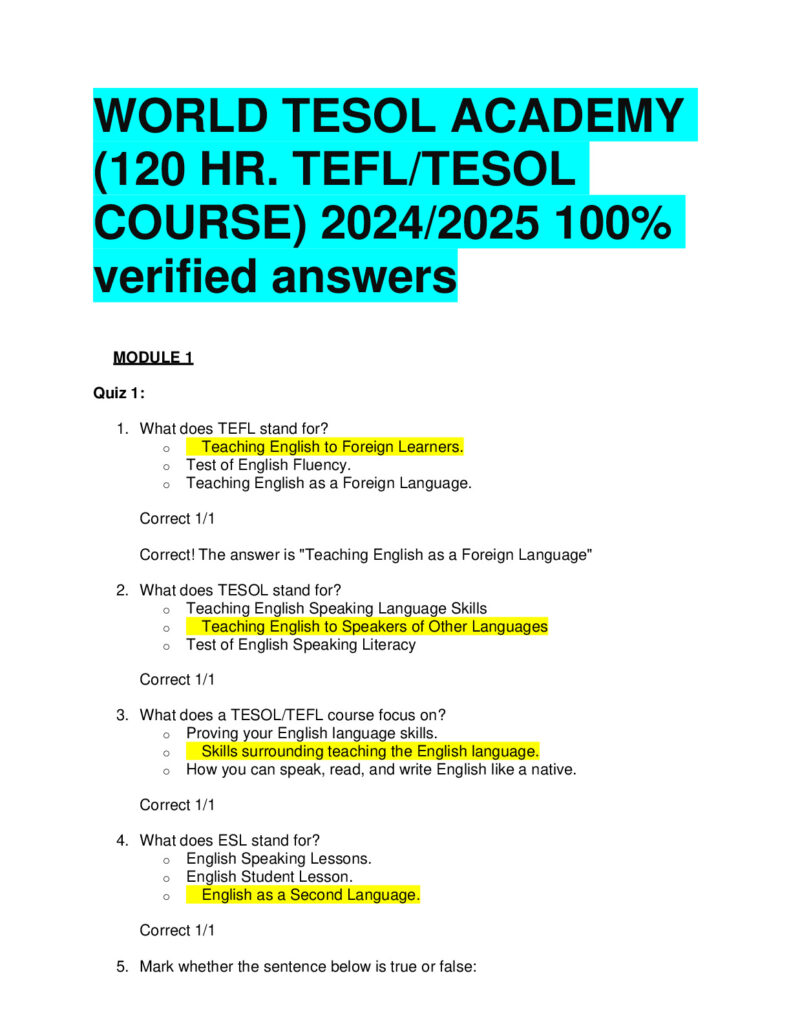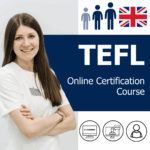Remember that feeling? The one where you’re standing at a crossroads, dreaming of something bigger, something different? Maybe it’s a yearning to travel, to truly connect with other cultures, or perhaps a desire to switch careers and find a job that feels meaningful. For me, it was all of the above, wrapped up in a deep-seated love for language. That’s when I stumbled upon the idea of a TESOL course.
Before I started, the world of English language teaching felt like a secret club I wasn’t part of. I spoke English, sure, but teaching it? To people who barely knew "hello"? That felt like a whole different ballgame. If you’re reading this, chances are you’ve had similar thoughts. You’re curious about what a TESOL certification entails, whether it’s worth your time, and if it can really open doors to new adventures.
Well, pull up a chair. Let me tell you my story.
The Great Unknown: What Even Is TESOL?
When I first heard "TESOL," I pictured a stuffy academic certificate. It stands for Teaching English to Speakers of Other Languages. In simpler terms, it’s a qualification designed to equip you with the skills and knowledge to teach English effectively to people whose first language isn’t English. You might also hear "TEFL" (Teaching English as a Foreign Language) – they’re largely interchangeable in the industry, both serving the same purpose: getting you ready for the classroom.
My initial research was a mix of excitement and doubt. Could I actually do this? I wasn’t a trained teacher. My experience was limited to helping a friend with their English homework once or twice. But the more I read about people traveling the world, living in vibrant new cities, and making a real difference in their students’ lives, the more I felt a pull. This wasn’t just about teaching; it was about experiencing life differently.
Taking the Leap: Choosing My TESOL Adventure
One of the first big decisions was how to take the course. Should I go for an in-person, intensive program? Or would an online TESOL course fit my busy schedule better? Both have their merits. In-person courses offer immediate interaction with instructors and peers, often with observed teaching practice. Online courses, on the other hand, provide flexibility, letting you learn at your own pace from anywhere.
For me, the flexibility of an online TESOL course was a lifesaver. I was still working, and the idea of quitting my job to attend a full-time course felt too risky at the time. I spent weeks researching providers, looking for good reviews, clear accreditation, and a curriculum that felt practical. I settled on a 120-hour TESOL course, as this is widely recognized as the industry standard. Anything less, I learned, might not be taken seriously by employers.
And so, my TESOL journey began.
Inside the "Virtual Classroom": What I Actually Learned
Starting the course felt a bit like opening a brand-new, exciting book. Each module unveiled a new layer of what it means to be an effective English teacher. It wasn’t just about grammar (though we certainly covered that!); it was about understanding the entire process of language learning.
Here’s a peek into what truly stuck with me:
- Understanding the Learner: This was eye-opening. Before, I just thought, "They need to learn English." Now, I understood the different motivations, learning styles, and challenges that non-native speakers face. We talked about how to teach young learners versus adults, complete beginners versus intermediate students. It made me realize that teaching isn’t a one-size-fits-all approach.
- The Power of Lesson Planning: This was a big one. I used to think you just walk in and start talking. Oh, how wrong I was! The course taught me how to structure a lesson, set clear objectives, choose engaging activities, manage my time, and anticipate potential problems. It was like learning to be a conductor for an orchestra – every part needs to work together to make beautiful music. I learned about the "ESA" (Engage, Study, Activate) framework, which became my go-to for designing dynamic lessons.
- Grammar, But How to Teach It: As a native speaker, I knew grammar, but I couldn’t explain why we use "present perfect continuous" or how to simplify complex rules. The TESOL course broke down grammar points into digestible, teachable chunks. We explored different techniques for explaining tricky concepts, from using timelines to contextual examples. It made me appreciate the structure of my own language in a whole new way.
- Pronunciation and Phonology: This was surprisingly fun. Learning about the International Phonetic Alphabet (IPA) and understanding how to help students articulate sounds they might not have in their own language was incredibly valuable. It wasn’t about making them sound "native," but about ensuring they could be clearly understood.
- Classroom Management Skills: This felt like a survival guide! How do you keep a class engaged? What do you do when students are shy, or overly boisterous? We learned practical strategies for creating a positive learning environment, handling disruptions, and fostering participation. It’s not about being strict; it’s about being prepared and understanding group dynamics.
- Communicative Language Teaching (CLT): This approach became the backbone of my understanding. Instead of just drilling grammar rules, CLT focuses on getting students to use the language for real communication. Role-plays, debates, problem-solving tasks – these were the kinds of activities we learned to design, making learning feel relevant and fun.
- Utilizing Resources and Technology: The course also touched on how to use textbooks, online materials, videos, and even simple props to make lessons more vibrant and effective. In today’s digital world, this practical skill is more important than ever.
It wasn’t always easy. There were moments when I felt overwhelmed by the amount of information, or when I doubted my ability to put theory into practice. But the structured approach, the examples, and the encouraging feedback from my tutors kept me going. I learned so much, not just about teaching, but about patience, adaptability, and the incredible journey of language acquisition.
The "Aha!" Moments: When Theory Became Real
One of the most impactful parts of the TESOL course was the practical application. Even with an online course, there was a component where I had to design lessons, create materials, and even record myself teaching. It sounds daunting, but it was invaluable.
I remember struggling with my first lesson plan for an intermediate group. I wanted to teach them about idioms. My first draft was a mess – too much explanation, not enough activity. My tutor’s feedback was gentle but firm: "How will they use these idioms? Where’s the student interaction?" That pushed me to rethink. I redesigned the lesson to include a game where students matched idioms to situations, then role-played conversations using them. The difference was huge. It taught me that teaching isn’t about me talking; it’s about students doing.
Another "aha!" moment came when we discussed error correction. My instinct was to jump in and correct every mistake. The course taught me about ‘delayed correction,’ ‘peer correction,’ and ‘self-correction.’ It’s about letting students communicate and build confidence, then guiding them to fix errors in a way that truly helps them learn, rather than just pointing out what they did wrong. This shift in perspective was a game-changer.
Beyond the Certificate: The Doors It Opened
When I finally received my TESOL certification, it felt like holding a golden ticket. Suddenly, the world didn’t seem so daunting. I had a tangible skill, a recognized qualification, and newfound confidence.
Here’s how my TESOL journey impacted me:
- Global Job Opportunities: The most obvious benefit was access to a whole new job market. Schools and language centers all over the world look for TESOL-certified teachers. Whether you dream of teaching in bustling cities like Seoul or Tokyo, charming European towns, or vibrant South American countries, TESOL is often the key requirement.
- Confidence in the Classroom: Stepping into my first real classroom felt less terrifying than it would have without the training. I had a framework for lesson planning, a toolkit of activities, and a better understanding of how to manage a group of learners. I wasn’t an expert, but I was prepared.
- Personal Growth and Adaptability: Teaching English abroad is an adventure in itself. It forces you to step outside your comfort zone, learn new cultures, and adapt to different ways of life. My TESOL course gave me the professional foundation to embrace these challenges, knowing I had a valuable skill to offer.
- Connecting with People: This, for me, was the most rewarding part. Helping someone learn a new language isn’t just about vocabulary and grammar; it’s about empowering them to connect with the world, access new information, and pursue their dreams. The connections I’ve made with students from diverse backgrounds have been incredibly enriching.
- A Stepping Stone: For some, TESOL is a path to a long-term career in education. For others, it’s a way to fund travel and experience life abroad for a year or two. For me, it was a fantastic way to broaden my horizons and gain valuable communication and leadership skills that are useful in any profession.
Is a TESOL Course Right For You?
If my story resonates with you, you might be wondering if a TESOL course is the right step. Based on my experience, I’d say it’s a fantastic investment for anyone who:
- Dreams of Traveling and Working Abroad: It’s one of the most accessible ways to live and work in another country.
- Wants a Meaningful Career Change: If you’re looking for work that feels impactful and engaging.
- Loves Language and Culture: If you’re fascinated by how languages work and enjoy connecting with people from different backgrounds.
- Enjoys Helping Others Learn: There’s a deep satisfaction in seeing your students progress.
- Is Looking for Flexible Work: Many teaching positions offer good work-life balance, and online teaching is also a growing field.
- Wants to Boost Their CV: The skills you gain – communication, planning, cross-cultural understanding – are highly valued in many industries.
Choosing Your Own TESOL Path: Practical Advice
If you decide to embark on this journey, here’s some advice from my own experience:
- Accreditation Matters: Make sure your chosen TESOL course is accredited by a recognized body. This ensures quality and makes your certificate widely accepted. Don’t fall for unaccredited, super-cheap courses.
- Look for 120 Hours (Minimum): As I mentioned, the 120-hour TESOL course is the industry standard. Many employers won’t consider applicants with fewer hours.
- Consider Teaching Practice: While online courses are great for flexibility, some offer an optional teaching practice component. If you’re completely new to teaching, this can be incredibly beneficial for hands-on experience and feedback.
- Read Reviews: Look for genuine feedback from past students about the course content, tutor support, and job assistance.
- Understand the Cost: Prices vary widely. Compare what’s included (materials, tutor support, job placement assistance) with the overall cost. A good course is an investment in your future.
- Online vs. In-Person: Weigh the pros and cons based on your learning style, schedule, and budget. Both are valid paths to TESOL certification.
My Final Thoughts
Getting my TESOL certification wasn’t just about earning a piece of paper; it was about unlocking a new version of myself. It gave me the skills, the confidence, and the opportunity to live a life I had only dreamed of. It taught me patience, adaptability, and the profound joy of helping someone connect with the world through language.
If you’re on the fence, I encourage you to take the leap. Research, ask questions, and imagine where this qualification could take you. For me, it led to incredible experiences, unforgettable connections, and a profound sense of purpose. And who knows? It might just do the same for you. The world of English language teaching is waiting.



